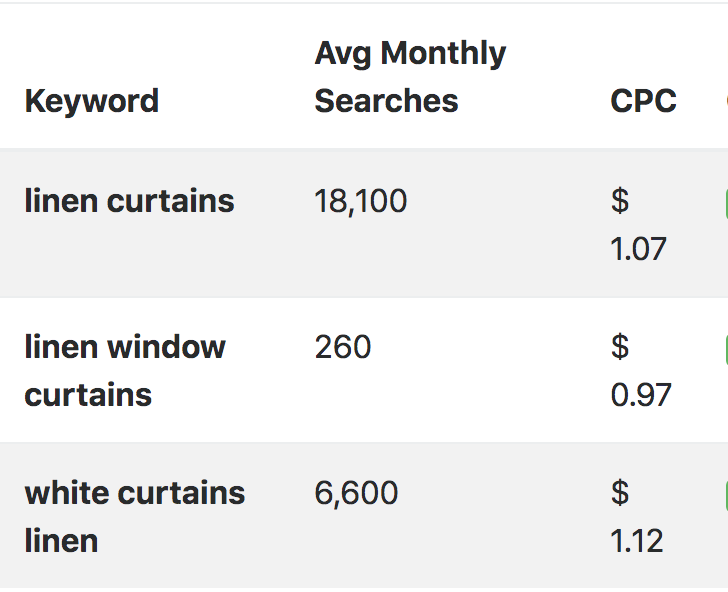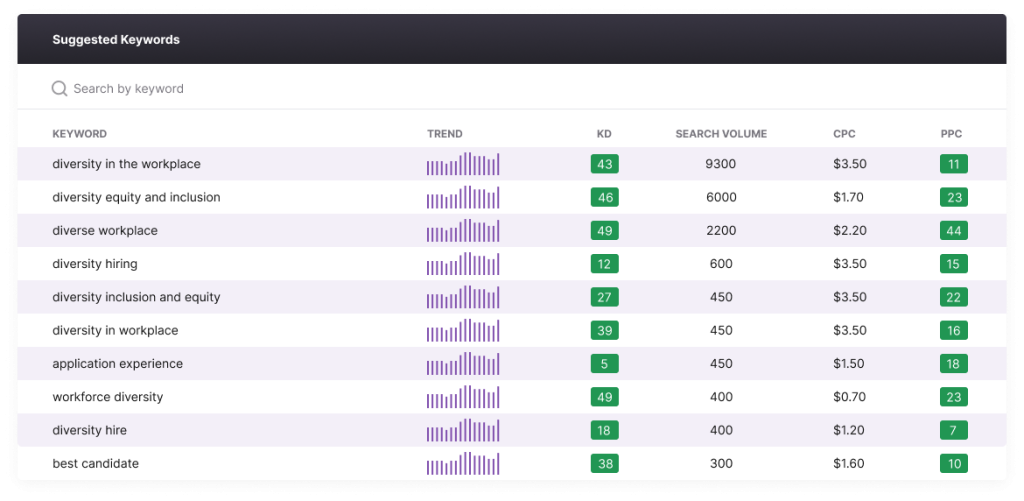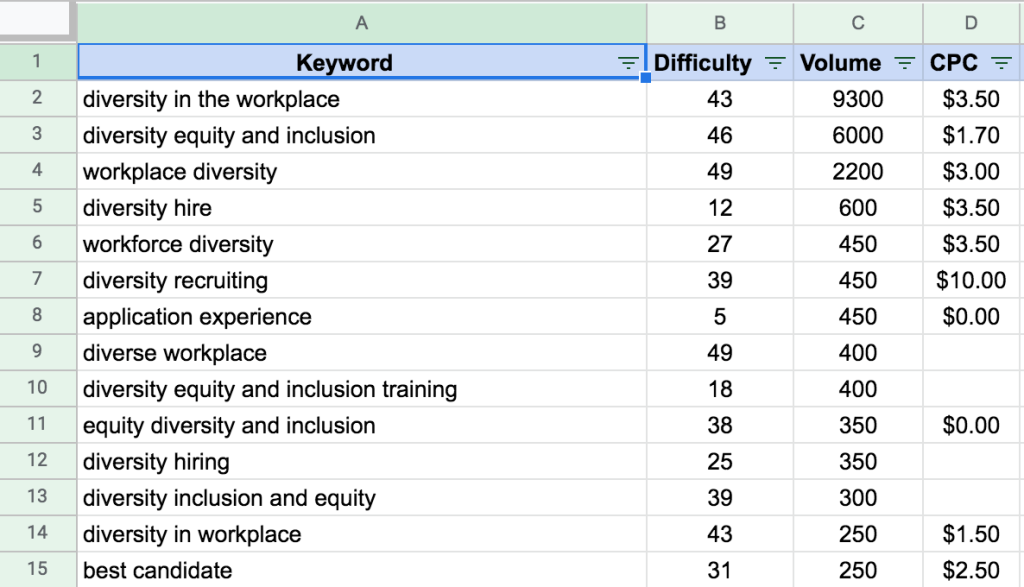
Google’s engineering team has shifted its focus in recent years to natural language processing and a better understanding of how on-page content interacts.
Google was able to understand synonyms thanks to neural matching. BERT aided Google in comprehending those perplexing prepositions.
Google becomes more literary with each core update.
Despite Google’s advancements, many website owners continue to optimize their sites with only a few keyword targets in mind.
This is an outmoded practice, especially given that our landing pages frequently rank for hundreds of keywords.
For those of us who have been following Google since its inception, this feels like a brave new world for on-page SEO.
As Google’s natural language processing (NLP) capabilities improve, our on-page SEO strategy must adapt to reflect those advancements in search.
So, how do we improve our on-page optimizations to keep up with Google’s technology?
The solution is keyword clustering.
Read Is Keyword Density A Google Ranking Factor?
What Exactly Are Keyword Clusters?
Keyword clusters are collections of keywords that represent searchers who have a similar purchase intent.
“Linen curtains,” “linen window curtains,” and “white curtains linen,” for example, are all different keyword phrases, but they all represent searchers looking to buy linen curtains.

Assume your company sells linen curtains. If you only try to rank for the first keyword, you will have a small market share.
Instead, if your web page ranks for your primary keyword as well as long-tail variants and related subtopics, your page will frequently rank for 10-20x the number of keywords and receive significantly more traffic.
How to Make Keyword and Topic Groups
To fully leverage the power of keyword clusters, keep in mind that this strategy requires significantly more time and resources than a one-and-done approach to website optimization.
It necessitates more keyword research, content creation, and effort on the part of your SEO and marketing teams.
However, creating topic clusters on your website will ultimately make it more Google-friendly and user-friendly. The following are some of the advantages of keyword clustering:
- Long-tail keyword rankings are strong.
- Short-tail keyword rankings have improved.
- Increased organic traffic.
- Improved ranking in the SERPs more quickly.
- More chances for internal linking.
- Developing knowledge and content authority in your industry niche.
Here’s a quick rundown of how to do keyword clustering and how to create a content strategy based on those clusters.
Step 1: Create a Keyword List
Keyword research is the first step in keyword clustering. There’s a lot of it.
Consider the primary keyword for which you want your website to rank.
Then, identify all of the keyword variations, long-tail phrases, and subtopics that searchers are using.
To begin, look at your competitors’ rankings to see what keywords they are currently ranking for.
Then, using a keyword tool, look for related keywords, autocompletes, subtopics, or questions that searchers are using to find similar products and services to yours.

There are several methods for documenting your keyword research, but spreadsheets are the most straightforward.
Include the organic difficulty, search volume, and cost-per-click metrics for each keyword in your list.

These metrics will assist you in determining which keywords have the highest economic value and should be considered “core” keywords in your clusters.
During their research, some SEO professionals identify thousands of keywords. However, if you’re just getting started with this strategy, a hundred keyword phrases should be enough to identify several different topic clusters that you can expand on on your website.
As you generate your keyword list, keep in mind the importance of relevance and search intent.
You should only include keywords that will bring the right types of searchers to your website, those who are actually interested in the products or services you offer and are likely to convert.
Step 2: Divide Your Keywords Into Groups
Once you have a large keyword list, you will begin to notice patterns in your keywords.
You may notice that users’ search queries contain the same words, phrases, synonyms, or subtopics. These patterns represent the various ways in which keywords can be clustered and formed into groups.
The image below depicts keyword research for a software platform that assists businesses in recruiting, interviewing, and hiring employees.

The following are the criteria you should use to group these keywords into clusters.
Semantic Relevance
It’s critical that the keywords in your clusters have the same search intent.
If you try to optimize a landing page for keywords that are too dissimilar, the content will become less readable and Google will become confused about what your page content is really about.
CPC And Search Volume
Your cluster’s core keywords should have a reasonable search volume (otherwise you optimize for nobody).
They should also have the ability to convert (CPCs speak to their economic value).
Difficulty with Organics
The inclusion of keywords with higher organic difficulty will be determined by your site authority, backlink profile, and the age of your website.
Include only keywords in your clusters for which your site has a realistic chance of ranking.
Try free Plagiarism Checker, Paraphrasing Tool, and Website Reviewer.
A Closer Examine of Two Keyword Clusters
Once you’ve identified the cluster’s core keyword, pair it with complementary keywords.
For example, you can include some that are long-tail, have a lower difficulty or volume of searches, or would be an easy win simply by including enough information about them on the landing page.
Let’s apply the fundamentals of keyword clustering to the keywords for our software platform. Here’s an example of a possible keyword cluster:

Why are these keywords a good fit for a cluster?
Because they are semantically related. These individuals are all looking for a product that will assist them in scheduling interviews.
The core keyword, “interview scheduling software,” is the most valuable, and we’ve paired it with complementary keywords with lower search volume but high CPC.
Now for the second cluster:

These keywords have a slightly different search intent and thus belong in their own cluster. These users are more interested in a tool that will assist them in conducting virtual interviews.
Our primary keyword is slightly more difficult to rank for, but we have supplemented the cluster with keywords with lower difficulty and high conversion potential.
You can manually segment your keywords into groups if you are confident in your niche and understand the keyword metrics and the nuances of search intent (just like I illustrated above).
There are also keyword grouping tools available that help to automate the process. They can group your keywords together for you.
Remember that not all of the keywords in your list have to end up in your clusters as you segment.
The most important keywords to include are those with the highest value.
A keyword’s value is determined by its high CPCs, high search volume, and relevant search intent.
Step 3: Build and Optimize Pillar Pages for Your Keyword Clusters
Once you’ve organized your keywords into clusters, you’ll have a road map for creating, optimizing, and organizing the content on your website.
Your keyword clusters essentially represent the main topics of your website.
These are also known as “pillar pages.”
In the preceding example, we identified two major keyword clusters for our software platform.
To properly carry out our keyword clustering, we must create landing pages for each of those keyword clusters.
One landing page should be dedicated to the platform’s interview scheduling feature. The virtual interviewing tool should be the focus of the other landing page.

The pillar pages for your keyword clusters should follow best practices for on-page SEO. Using a content optimization tool to help you optimize your content more effectively is one of my favorite strategies.
Prioritize the following areas to improve the ranking potential of your pillar pages:
- Topical Depth: Write long-form content that delves deeply into the topic.
- Information Architecture: Have a clear structure and include your keyword phrases in your h2s and h3s.
- Page Experience: Include interactive on-page elements such as videos, jump links, and carousels to improve the user’s page experience.
Step 4: Use Blog Content to Reinforce Your Keyword Clusters
You can build out blog content that reinforces your primary keyword clusters to improve the ranking and content authority of your pillar pages.
These blogs can be used to target longer-tail keyword phrases, subtopics, or questions related to your primary keywords.
As you create more content, those web pages will group together to form “topic clusters” on your website.

The internal linking profile of this content will have a significant impact on how your website’s landing pages rank in Google.
To increase your chances of ranking for those higher-value keywords, your blog posts should link back to their respective pillar pages.
You will be able to create more clusters on your website if your company has multiple products or areas of expertise.
When everything is in place, your website content will look something like this:

If you only sell one primary product or service, you will identify fewer keyword clusters. Nonetheless, exploring your primary topic areas with a large amount of useful content can help you outrank your competitors in less time.
Building out your clusters also allows you to add more internal links to your website.
Internal links not only increase the number of time users spend on your website, but they also help Google understand which pages of your website are the most important.
Is Keyword Clustering Really Worth the Effort?
Keyword clusters are a more advanced SEO strategy that can provide you with the competitive advantage you need to win in competitive verticals.
This is due to their responsiveness to Google’s two most powerful superpowers: natural language processing and unrivaled indexing.
Consider this. Google understands the millions of keyword phrases used by searchers across industries. It also recognizes minor differences in those queries and how they relate or do not relate to one another.
Google has spent years training its NLP models to compute content quality signals and predict which web pages will best provide the information the searcher is looking for.
When you use keyword clustering on your landing pages, you show Google that your website is an authority in your industry and has a wide range of content.
You also provide the rich content clusters that Google’s content signals have been trained to identify and promote in search results.
Keyword clustering necessitates that site owners think more broadly about their content. It’s also the way of the future for SEO.
If you want your web pages to rank for the long term, it’s time to catch up with Google’s on-page strategy.
Learn more from SEO and read A Guide to Google News, Top Stories, and Discover Optimization.





2 Comments